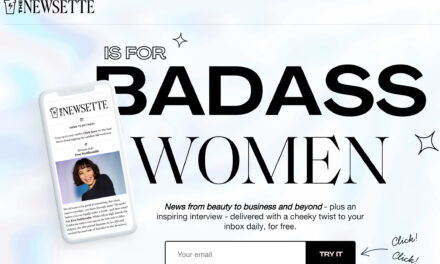The term “dark marketing” certainly has a sinister ring. It conjures up all sorts of nefarious images—SPAM, phishing scams, and worse. Thankfully, dark marketing isn’t quite that bad. Instead, it’s a new term for the kind of personalized marketing becoming familiar to advertisers and audiences alike.
Dark marketing combines different marketing techniques — including fragmented, segmented, personalized and retargeted efforts. Relying on all those techniques to create a highly personalized experience that’s different for everyone results in dark marketing. Instead of targeting broad audiences, like all the people who tune into a TV show or read a magazine, today’s ultra-personalized campaigns are only visible to the people they target. That leaves the competition in the dark — hence the name.
“The benefit of dark marketing is that marketers avoid wasting resources through ‘spray and pray’ advertising…Instead, the brand is precisely targeting audiences most likely to be receptive to their messages, ensuring targets are only seeing relevant ads,” says Alon Leibovich, CEO and co-founder of BrandTotal. “Today, roughly 90 percent of Twitter ads, 85 percent of Facebook ads and 60 percent of YouTube ads are dark or unpublished, making them hidden from public view. Marketers have the ability to keep these ads hidden from public timelines, and only serve them to a select group of viewers.”
While delivering personalized experiences makes good business sense, and helps keep your competition in the dark, it also makes it harder for you to keep tabs on what’s working for others.
Kashyap Kompella, CEO of rpa2ai Research says, “If you are in an industry where you’ve got to keep close tabs on your competition’s advertising, then you can rely on a third-party to do that for you.” BrandTotal hopes to rhelp customers do exactly that with its AI platform that allows marketers to see the full social media picture including all the dark posts. According to the BrandTotal website, its “Agile Marketing Intelligence uses AI to distill usable insights from the massively targeted campaigns your audience is exposed to every day.” Essentially, it aims to tell clients what’s in their blindspots and how they stack up against the competition.
But the transparency issues with dark marketing go well beyond competitive insights.
“Dark marketing is grouped closely with the brouhaha that Facebook has experienced over the past couple of years for its involvement in the presidential election and privacy concerns in general. The reason why it’s a problem for brands is because it’s out there, legal, and super-effective … but it comes with a lot of baggage,” said Tim Bourgeois, digital media strategy director at East Coast Catalyst. As a result, the biggest problem with dark marketing is the lack of transparency.
Up until recently, people have been handing over their data freely—often unwittingly—in exchange for free services like Facebook and Gmail, but they don’t really know what they’re giving away, or how it’s going to be used, according to Bourgeois. Even as Facebook’s data scandals made big news, the European Union was putting its General Data Privacy Regulation (GDPR) into place, making the collection and use of data a much more precarious prospect.
Bourgeois advises brands to use dark marketing in moderation. “The holy grail for brands is to have a direct line to consumers, so they aren’t dependent on intermediaries. But that takes time, and resources, and discipline. Smart advertisers will rely on tactics like dark marketing for unique promotions or to reach targeted, difficult-to-reach demographics, and get in and out quickly. Most marketers understand that over-reliance on either the duopoly (Facebook, Google) or any other channel never ends well. The same principle holds true for dark marketing — it’s appropriate sometimes, but only sometimes.”
Kompella has some advice for marketers who may be too concerned with what their competition is up to. “But in our view, ‘dark marketing’ issues are the icing on the cake, not the cake itself,” says Kompella. “The cake consists of first getting past ad blockers; breaking thru consumer indifference; balancing relevance versus intrusiveness; personalization while respecting user privacy and complying with regulations. In other words, get an intimate understanding of your customers first and then you can train your sights on your competition.”






